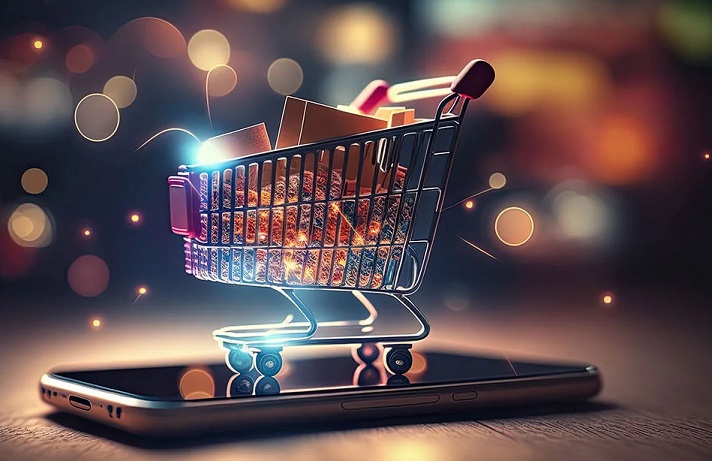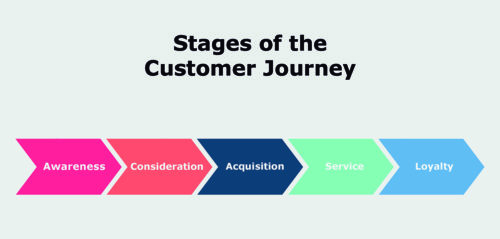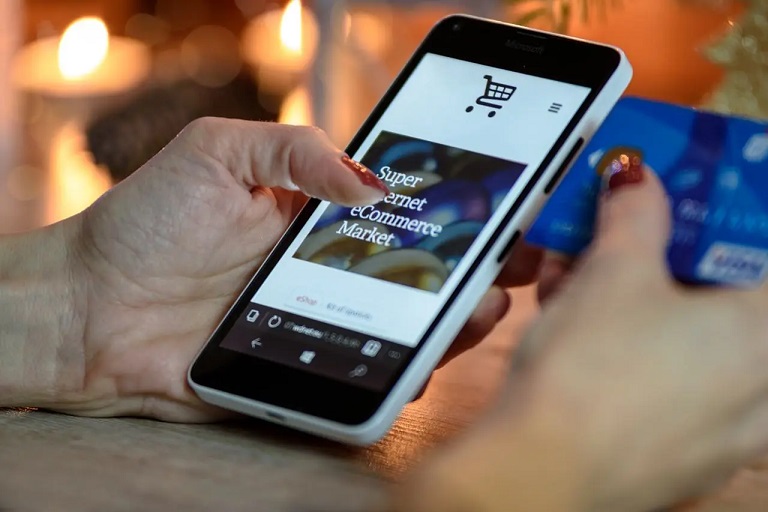Ecommerce has redefined the traditional bricks and mortar retail model, with online stores no longer being considered a “nice-to-have” and instead a “must-have“. With KPMG reporting that the global retail ecommerce market size was estimated to be US$5.5 trillion in 2022, a clear ecommerce model can create a lucrative alternative revenue stream.
As ecommerce continues to redefine the traditional retail model, the delivery of goods remains critical in the ecommerce model as a factor that can set brands apart and pave the way for success. The delivery experience has since evolved from being a monotonous transactional process to a key influencing factor in purchasing decisions, customer loyalty, brand perception and, ultimately, a retailer success.
Accordingly, retailers that prioritise efficient shipping, accurate tracking, and seamless returns stand not only to retain customers but also to build a loyal customer base. This “real-time” approach towards the delivery journey has been propelled by the increasing usage of technology.

Introduction of Ecommerce
Ecommerce, short for electronic commerce, is described by McKinsey & Company as the buying and selling of goods or services online. Ecommerce businesses can be broadly classified across three areas: merchandise sales companies; service providers; and digital product companies. The benefits of ecommerce include, inter alia, the reduction in the impact of geographical barriers and enabling businesses to reach a global customer base at all times of the day, at a significantly lower cost than traditional brick and mortar retail business models.
It is reported that the first secure online transaction was made in 1994, marking the birth of ecommerce. Subsequently, ecommerce has been growing consistently. The early 2000s saw the wider adoption of online offerings for retailers, as well as the growth of online marketplaces and the introduction of secure payment gateways, boosting consumer trust in online transactions.
Internet sales as a proportion of all retail sales have been rising steadily since 2006 and, by the 2010s, there was a rise of Mobile Commerce (M-commerce) due to the proliferation of smartphones and Mobile Applications. Social media platforms also integrated shopping features, transforming how businesses connect with customers and how customers source goods online.
In the 2020s, online shopping now encompasses Business-to-Consumer (B2C), Consumer-to-Consumer (C2C), Business-to-Business (B2B) and Consumer-to-Business (C2B) models. According to UK government data, the average weekly value of internet sales was reported to be £2.4 billion in August 2023 (excluding fuel) – accounting for 26.7 per cent. of all retail sales. This demonstrates the scale of the ecommerce industry when compared to traditional bricks and mortar retail business models.
There are now multiple routes to market for retailers to reach customers that did not exist only one, two or three decades ago. The history of ecommerce reflects a journey from basic online transactions to a complex global ecosystem. Against this backdrop, Deloitte forecasts the global ecommerce market to reach a market size of US$6.35 trillion by 2027. In September 2023, retail sales in Great Britain were recorded at £8.5 billion per week and, with businesses operating for market share in a challenging economic environment.

Understanding the ecommerce customer journey
Central to understanding the ecommerce industry is the concept of the ecommerce customer journey. The ecommerce customer journey is described as the complete end-to-end experience of a customer from the initial interaction with a brand’s online store to the final interaction which depending on the customer’s satisfaction ranges from repeat purchases and loyalty to returning or exchanging a product purchased or even potentially both.
Throughout the ecommerce customer journey, there are multiple “touchpoints” whereby the customer may interact with the business, product, or brand – either directly or indirectly.
This can vary greatly depending on numerous factors including but not limited to the product category, the product value, the retailer’s website or the customer’s geographical location. In any event, understanding and enhancing the ecommerce customer journey is expected to support businesses further increase engagement and ultimately increase sales conversion.
While the traditional ecommerce customer journey is no longer linear in nature, the Directors consider the ecommerce customer journey to be broadly categorised into the following stages:
1. Awareness and research:
The ecommerce customer journey begins with a potential customer developing a need or want for a product or service. Through mediums such as social media, online search engines, advertisements, or word of mouth, potential customers become aware of specific ecommerce businesses. Potential customers will subsequently proceed to researching and exploring products that match their specific needs or wants. This may involve a visit to a retailer’s website, a visit to a showroom or store, reading product descriptions, reading reviews, or comparing offerings from multiple online stores for competitive prices or options.
2. Consideration and decision:
Potential customers will proceed to evaluate their purchase options further. This may include shortlisting of several candidates and subjecting them to more in-depth comparison utilising factors such as price, features and perceived advantages or disadvantages. This stage culminates with the potential customer adding the product or service to their online “shopping basket” and ultimately deciding whether to proceed with purchasing the product or service. Time spent during this stage will be influenced by whether the purchase is low-value in monetary terms or potentially an impulse purchase i.e. an unplanned decision to purchase a product or service.
3. Checkout:
The checkout stage represents the point at which a potential customer transitions into an actual customer. The checkout stage involves the potential customer reviewing the available delivery options, any return policies, inputting payment details as well as inputting any relevant personal details, as applicable. Following satisfactory completion of the relevant fields, an order can be confirmed. It is reported that almost 70 per cent. of potential customers abandon purchases at the checkout stage. Accordingly, an effective checkout experience is an important element of the ecommerce customer journey.
4. Order confirmation:
Following completion of a purchase, the customer will receive an order confirmation which will summarise the purchase details associated with the product or service as well as include an indication of delivery timings. The order confirmation may take the form of either a web page confirmation or alternatively a digital communication directly to the customer, such as an email or text message to a mobile phone.
5. Fulfilment and shipping:
The confirmed order will be fulfilled at the retailers designated warehouse. Agreed logistical parameters will ensure that the product or service purchased is identified, picked, packed, and delivered to the destination as agreed with the customer.
6. Delivery:
During the delivery phase, the product or service will no longer be in the proximity of the seller and instead will be in the possession of the intermediary responsible for delivery. During this phase, the customer will await the delivery of the order. Depending on the level of service offered to the customer, the customer may be able to track their good or service delivery, review the status of the delivery (as applicable), or alternatively contact customer support for real-time updates in anticipation of the arrival of their purchased product or service.
7. Unboxing and product experience:
Following delivery of the product or service, the customer will experience the purchased item first-hand. Depending on whether the product or service is a tangible item, this stage is considered to be the only physical “offline” touchpoint between an ecommerce business and a customer.
Depending on the customer’s experience during the above process, the ecommerce customer journey diverges further into either stage eight or nine (or alternatively, sometimes both eight and nine), as outlined below.
8. Repeat purchase and loyalty:
If the customer is satisfied with their ecommerce experience, the customer may become a repeat shopper of the business concerned. In addition, satisfied customers may share their positive experiences with friends, family or online communities, leading to word-of-mouth referrals. This may result in further new customers for the ecommerce business.
9. Returns – refunds and exchanges:
If the product or service is considered to be unsatisfactory or faulty, the customer may return their purchase and request a refund or an exchange. This decision triggers a ‘reverse logistics’ journey whereby the product or services is returned by the customer back to the ecommerce business.
At all stages of the ecommerce customer journey, sits the “customer service” touchpoint. Customer service comprises support and assistance provided to customers during their online ecommerce experience. Interactions with customer service typically arise at stage six of the ecommerce customer journey. It is reported that 77 per cent of consumers consider good customer service to be critical to earning brand loyalty and generating business.

Factors affecting the ecommerce industry
While many of the recent developments in the ecommerce industry were driven by the COVID-19 pandemic, many influencing factors were long underway before the COVID-19 pandemic. Notable factors influencing the ecommerce industry are outlined below.
1. Technological advancements:
The rise of smartphones and increased internet accessibility has played a pivotal role in shaping the ecommerce landscape. In this respect, according to Statista’s Market Insights mobile ecommerce represented 60 per cent. of all ecommerce transactions globally in 2023. Mobile ecommerce allows consumers to shop conveniently from their handheld devices from any location at any time. This trend has prompted businesses to optimise their websites, Mobile Applications and create responsive, mobile-friendly designs to cater for the growing number of mobile shoppers.
2. Social ecommerce:
Deloitte reported that 64 per cent. of digital buyers discover brands or products via social media. The prevalence of social media platforms such as Facebook, Instagram, and TikTok and the integration of shopping features within such platforms has further transformed the ecommerce customer journey. For example, Instagram launched a new shopping functionality in 2018 which included initiatives such as the implementation of “shoppable stories”.
Ecommerce businesses leverage social media platforms to showcase products, facilitate direct transactions and tap into influencer marketing, thereby capitalising on the power of social engagement to drive sales. In addition, social ecommerce can serve to create a powerful consumer engagement ecosystem, from driving brand engagement, funnelling recruitment, to driving repeat purchase insights. Social ecommerce has since evolved to encompass digital stores directly incorporated on social media platforms, conversational ecommerce as well as livestream ecommerce. Social ecommerce has resulted in consumers becoming accustomed to Omnichannel shopping and Omnichannel customer service.
3. Subscription ecommerce:
The advent of subscription-based models involving customers subscribing to products or services needed on a recurring basis has gained prominence, with Forbes reporting that the global subscription e-commerce market size is expected to reach US$904.2 billion by 2026. Notable examples include Amazon Prime, which reached an estimated 112 million US subscribers in December 2019, and ASOS plc’s delivery subscription model both of which offer customers personalised experiences and convenient, cost-efficient product delivery.
4. Logistical improvements:
The supply chain and logistics landscape has evolved to meet the changing ecommerce model. With fast and reliable shipping options becoming a key factor for consumers and with consumers willing to pay for such services, retailers have needed to find ways to efficiently manage their Carrier relationships in a scalable way. This demand for speed and convenience has led to the rise of same-day and next-day delivery services such as Argos’ Fast Track service which was launched in 2015 catering for same day delivery on thousands of items with wide geographical coverage. This convenient access to products or services without the need for physically visiting a store has contributed to the growth of the ecommerce industry and according to McKinsey & Company has the potential to fundamentally change the way we shop.
5. Consumer behaviour:
Consumer spending is correlated with broader economic conditions. For example, during recessionary periods, consumer sentiment decreases resulting in reduced consumer spending and ultimately suppressed ecommerce activity. Conversely, during economic booms consumer spending increases.
Businesses are faced with fresh pressures including an unprecedented cost of living crisis. The ONS suggests that in October 2022, inflation was at the highest level it had been for over 40 years. Many consumers are battling the sharpest reduction in disposable income they have seen in their lifetime. Retail economic data suggests that the average household saw discretionary income drop by 10.6 per cent. in May 2022 compared to the previous year.
With the cost of everyday products and services rising, consumers are feeling the strain on their finances. In August 2023, the ONS said that, compared to February 2020, the last full month before the COVID-19 pandemic lockdowns began, total retail sales were 16.4 per cent. higher by value, but 1.8 per cent. lower in the volume of goods people bought.
Despite the period of customer cutbacks and rising inflation, consumers once again appear to be feeling more optimistic about their finances. Since reaching an all-time low of -20.3 per cent. in the third quarter of 2022, the Deloitte Consumer Confidence Index (based on six measures such as levels of debt and disposable income) has shown modest improvement, rising by six percentage points over the last four quarters to -14.2 per cent. in the third quarter of 2023.
Whilst consumer spending has been more elevated in recent years, market share remains available for businesses to capitalise on. In a challenging economic landscape, businesses are battling to ensure they have a competitive edge over their peers. There is an opportunity for ecommerce brands to emerge as market leaders, by converting customers and keeping them loyal. According to the Retail Think Tank, businesses should look to become customer-centric and should invest in technology to help them provide an insight rich operation.
6. The COVID-19 pandemic:
With the outbreak of the COVID-19 pandemic and the subsequent lockdowns globally as well as in the UK in March 2020, the ecommerce landscape experienced an unprecedented acceleration in the trends and adoption that had already been moving at a considerable pace.
In April 2019, the proportion of sales made online was at 19.1 per cent. In April 2020, the proportion of sales made online soared to the highest on record at 30.7 per cent.
Forced closure of physical stores meant that businesses had to quickly adapt by ramping up their online operations and expanding their digital presence – alongside operating their own businesses under budget pressures, staff absence and social distancing restrictions. Consumers also adapted their attitudes towards delivery – a Sorted study found that 79 per cent. of UK and US consumers were more forgiving about delivery experiences during the COVID-19 pandemic.
The COVID-19 pandemic period forced many retail businesses to prioritise online channel development and delivery transformation, as well as completely reshaping consumer shopping habits. The COVID-19 pandemic has changed consumer behaviours, some permanently. In a study released in March 2022, it was estimated that 27 per cent. of UK consumers planned to maintain their increased online shopping habits post-pandemic, and 51 per cent. of home workers said they expected to shop online more permanently.
In July 2023, the proportion of online sales rose to 27.4 per cent. from 26.0 per cent. in June 2023. This is the highest proportion of retail sales taking place online since February 2022 (28.0 per cent. and remains significantly above the pre-pandemic levels (19.6 per cent. in February 2020).
7. Rising demand for delivery experience technology:
With much more competition for businesses to win market share of consumer discretionary spending, businesses are seeking to trim costs and differentiate themselves in the market with the aim of giving consumers an experience that encourages repeat purchases and more spending. As a result, businesses are increasingly focusing on improving the “post-purchase” experience.
A positive post-purchase experience reinforces trust, customer satisfaction and potential advocacy for or loyalty to a business. Conversely, a negative experience can result in disengagement and lost customers. Research released in August 2023 found that 79 per cent. of consumers admit that they would be deterred from purchasing from a brand again if they encountered a subpar post-purchase experience. The same research indicated that 83 per cent. of consumers think that there is room for improvement in the post-purchase experience, signalling the opportunity for retailers to acknowledge, and capitalise on, this demand.
Data analytics is increasingly harnessed by businesses seeking to understand their consumer base: analysing shopping behaviours; offering personalised shopping recommendations; and serving the customer by putting them in control. Such technologies enable businesses to tailor their offerings in the way consumers prefer, enhancing the shopping experience and increasing the likelihood of conversions.
Many businesses have already invested in delivery experience technology and continue to do so. Notable examples of businesses benefitting from delivery experience technology include musicMagpie plc, which has invested in post-purchase technology to reduce “where is my order?” related enquiries and to ensure brand ownership of the journey – from communications to performance insight. With post-purchase technology in place, tracking and communications improved, resulting in a 63 per cent. reduction in “Where is my order?” related enquiries.